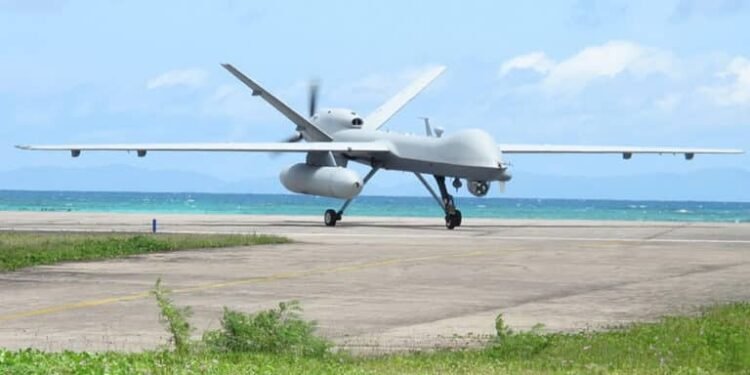
Drone warfare has profoundly changed the way in which wars are waged, exacerbated by the ease with which they can be obtained and used, said Professor Lindy Heinecken, vice dean of Research at Stellenbosch University’s Faculty of Arts and Social Science.
Delivering the keynote talk on day one of the inaugural Africa Aerospace and Defence Conference held at Waterkloof Air Force Base in the east of Pretoria, the military sociologist said the drone had become the significant weapon of war in Ukraine.
“For the first time we see a full scale drone war, by a country undermanned and under-equipped. It is a commercial drone operated by a youth holding a column of Russian armour at bay.”
Before the war, drones were traditionally the preserve of large militaries and inaccessible to civilian users, citing the US military’s use of the Reaper.
Conference programme director, author and war correspondent Hamilton Wende agreed, saying his first sight of drones in warfare had been in Afghanistan 14 years before while embedded with the US Marine Corps. Then, he said, the drones had petrol engines and could be heard approaching from some distance.
Today, said Heinecken, the ubiquity of drones has massive implications for national security; both positive and negative. They could be used to protect the citizens of a country or, if used by a cynical government, to enslave them through surveillance of their personal lives.
Drones, she said, have many uses from collecting information to understand where a country’s vulnerabilities are, but are also prone to abuse by individuals and groups with malicious intent, such as the Russians’ deliberate use of drones to attack economic infrastructure in Ukraine which had no military significance except to degrade Ukraine’s ability to afford to fight and the will of its people to continue the fight.
While enhancing national security, drones could also spark incredible resentment among those who were the subjects of either their surveillance or their terror.
“We are living in a post-panopticon era, which creates a climate of distrust and suspicion,” she said.
Drones are also capable of being hacked by third parties and either rendered inoperable or redirected against the actual people who launched them in the first place.
Their ubiquity was another clear threat as seen at the Beijing Olympics when more than 6 000 took to the sky to provide a show, operating as one swarm.
“We are now literally living in the time of liquid warfare,” she said. The nature of drone warfare is that those on the receiving end of weaponised drone attacks did not know where they were coming from, when they were coming or how many there were.
“This is a phenomenal change in the nature of warfare. It is potentially the weapon of choice because it protects the boots on the ground (soldiers) and reduces the risk for the users.”
There were massive risks for those on the receiving end of drone attacks, however, from collateral damage to the resentment and the radicalisation of communities, leading to an upsurge in recruitment for fundamentalist terror organisations, driven by a need to strike back against those operating the invisible weapon, she continued.
Equally, the ease of access and use paradoxically also makes drones the new weapons of choice for asymmetrical warfare, with drones being used in Cabo Delgado, the Democratic Republic of Congo, and Al Shabab in Somalia against conventional militaries.
There are huge ethical and legal implications about their use and accountability, but unlike nuclear weapons the world still has a chance to regulate what is becoming the 21st Century arms race, Heinecken said.
“Drones are hugely detrimental to humanity,” she said. The distance between decisions and human costs, especially when informed by AI and algorithms, leads to the abstraction of the act making it easier to justify lethal force without considering the consequences, much as is the argument with autonomous weapons.
“Two things are certain, human beings will always have reason to fight and human beings will always find more efficient ways to kill each other. There has to be a global pushback.”
The problem, she said, was that the four biggest players in the drone space were not ready to sit around a table and regulate the use of drones in war, even if the rest of the world was.
“We are living in the most dangerous time ever.”










